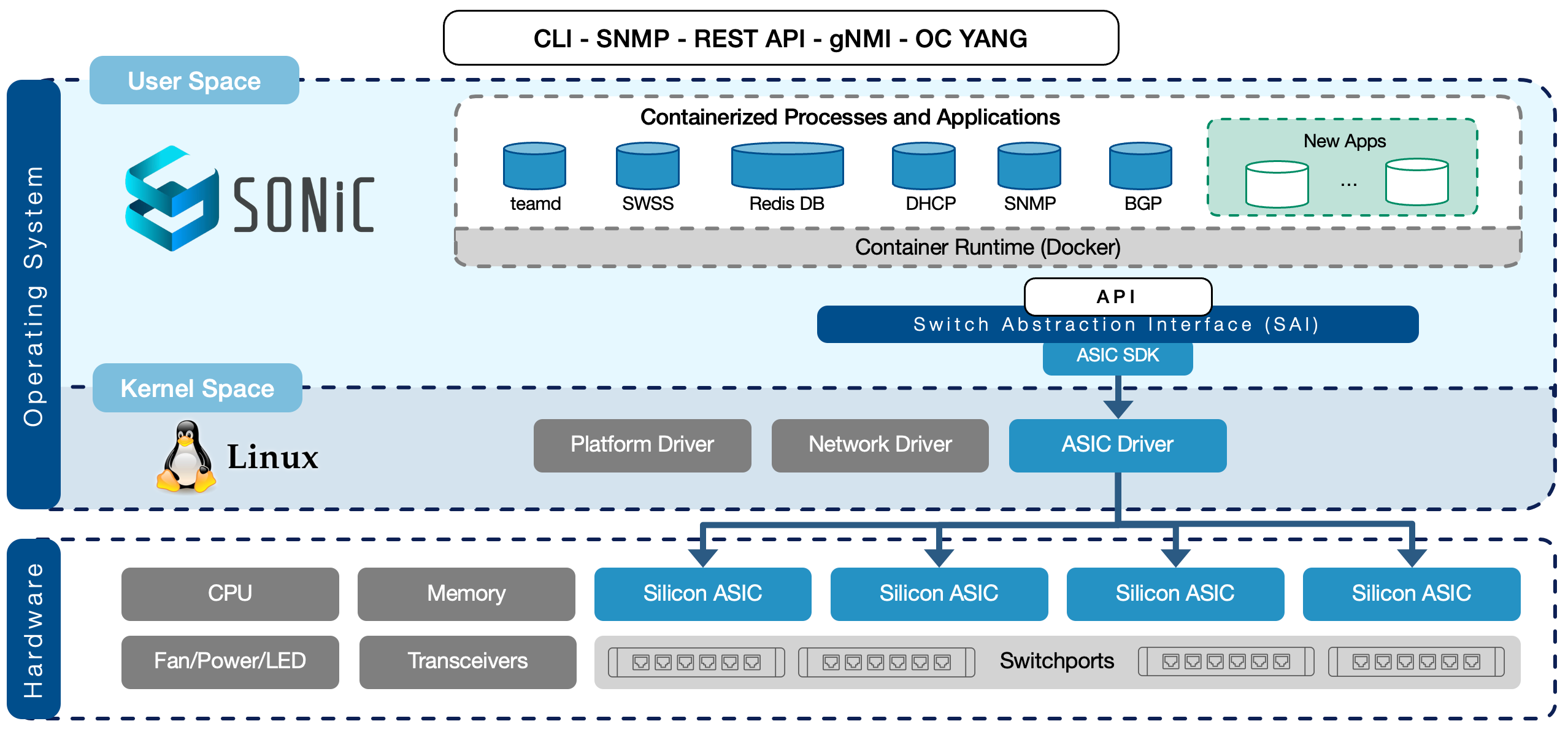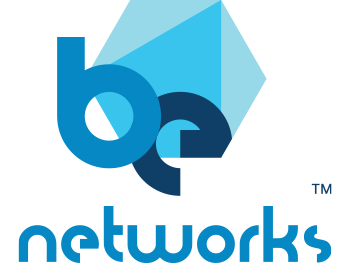
Why SONiC is Revolutionizing Modern Network Operations
As a network engineer who has spent years in the trenches with various network operating systems, I’ve witnessed firsthand how SONiC (Software for Open Networking in the Cloud) has emerged as a game-changer in modern data center networking. After earning my CCIE and working on enterprise networks of all sizes, I’ve come to appreciate what truly differentiates SONiC from traditional, proprietary NOSes. Today, I want to share three major advantages that make SONiC particularly compelling for forward-thinking organizations.
Containerization: Breaking the Monolithic Mold
Traditional network operating systems have historically been monolithic beasts – tightly coupled, interdependent components that must be upgraded together, creating operational headaches and increasing failure domains. SONiC fundamentally breaks this model through its containerized architecture.
Each network function in SONiC runs in its own container, providing true separation between processes. This architecture means that the routing protocol daemon, switch abstraction interface (SAI), and management services are all isolated from one another. When we need to patch BGP, we can update just that container without disrupting other services or requiring a full system reload.
In my experience deploying SONiC in production environments, this containerization has dramatically improved our ability to maintain network stability. For example, when a bug was discovered in our OSPF implementation, we were able to roll back just that specific container to a previous version while leaving everything else untouched. With our previous NOS, this would have required a complete downgrade of the entire switch OS.
The container-based architecture also provides an elegant approach to resource allocation and monitoring. Each container can be given specific CPU and memory constraints, preventing any single network function from monopolizing system resources during unexpected events. This has proven invaluable during troubleshooting sessions when we needed to analyze why a particular service was behaving abnormally.
Automation-First Approach: APIs All the Way Down
If you’re like me, you’ve spent countless hours in CLI interfaces, manually configuring devices one by one. SONiC represents a clean break from that operational model by embracing automation at its core.
SONiC uses a Redis database as its central source of truth for configuration and state information. This database-centric approach means that any configuration change, whether made through CLI, SNMP, or API calls, ultimately updates the same database. This provides unprecedented consistency across management interfaces and eliminates the “configuration drift” that plagues many networks.
The REST API support in SONiC is comprehensive, allowing everything from basic interface configuration to complex BGP policy manipulation. More importantly, these APIs aren’t bolted on as an afterthought – they’re the primary interface that the system itself uses. This “eat your own dog food” approach ensures that the APIs remain robust, well-maintained, and capable.
In my team’s environment, we’ve leveraged this API-first architecture to build CI/CD pipelines for network changes. When a developer submits a pull request with network configuration changes, our automation tests these changes against a SONiC test environment before deploying to production. This has reduced our change failure rate by over 60% and accelerated our deployment velocity.
Additionally, SONiC’s native support for industry-standard automation tools like Ansible and Terraform means you don’t need to reinvent the wheel. The community-maintained modules are comprehensive and regularly updated, allowing you to integrate SONiC devices into your existing automation frameworks with minimal effort.

Enterprise-Grade Features Without Vendor Lock-In
Perhaps the most remarkable aspect of SONiC is how it delivers enterprise-grade features through an open-source model. Unlike proprietary alternatives, SONiC runs on hardware from multiple vendors, including Arista, Cisco, Dell, Juniper, Mellanox, and many white-box manufacturers.
The feature set is impressive and continues to grow:
- Comprehensive routing protocol support (BGP, OSPF, IS-IS)
- Advanced features like EVPN, VXLAN, and VRF
- Deep buffer support for data center applications
- Robust QoS mechanisms
- Detailed telemetry and monitoring capabilities
Having deployed SONiC in production environments, I’ve been particularly impressed with its EVPN implementation. We recently migrated a multi-tenant data center from a proprietary solution to SONiC, and the EVPN capabilities proved more than sufficient for our complex overlay requirements.
The telemetry capabilities deserve special mention. SONiC exports rich, structured data about device state and performance through gNMI and Kafka interfaces. This allows for integration with modern observability platforms and enables real-time network analytics that were previously only available in expensive, closed ecosystems.
What truly sets these features apart is that they’re implemented through open, community-driven development. When we discovered an edge case in the BGP implementation that affected our specific traffic patterns, we were able to contribute a fix back to the community rather than waiting for a vendor to acknowledge the issue and develop a patch on their timeline.
Conclusion: The Future of Network Operating Systems
After years of working with proprietary network operating systems, my experience with SONiC has convinced me that it represents the future of data center networking. The containerized architecture provides flexibility and resilience, the automation capabilities accelerate operations while reducing errors, and the feature set rivals commercial alternatives without the vendor lock-in.
While SONiC isn’t appropriate for every environment yet (campus networks and some specialized service provider functions remain challenging), its rapid development pace and growing community suggest that its applicability will only expand over time.
For organizations looking to modernize their network infrastructure while avoiding vendor lock-in, SONiC deserves serious consideration. The learning curve exists, but the operational benefits are substantial and the community support continues to improve. As more networking professionals become familiar with container-based architectures and infrastructure-as-code practices, SONiC’s approach will increasingly become the expected norm rather than the exception.

Josh Saul
VP Product Marketing
Josh Saul has pioneered open source network solutions for more than 25 years. As an architect, he built core networks for GE, Pfizer and NBC Universal. As an engineer at Cisco, Josh advised customers in the Fortune 100 financial sector and evangelized new technologies to customers. More recently, Josh led marketing and product teams at VMware (acquired by Broadcom), Cumulus Networks (acquired by Nvidia), and Apstra (acquired by Juniper).


